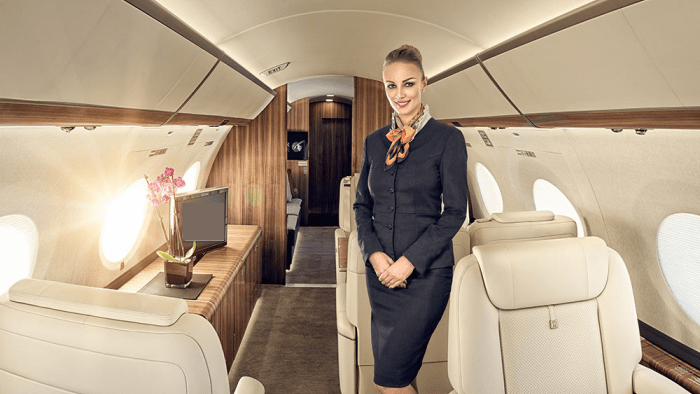Cabin crew plays a crucial role in ensuring safety and comfort onboard aircraft, both in commercial and private aviation. While commercial airlines adhere to specific regulations regarding cabin crew requirements, the private jet industry operates under slightly different guidelines. Let’s explore the differences in cabin crew requirements between commercial and private aviation, focusing on large private jets.
Defining Large Private Jets
Large private jets encompass a range of aircraft types, including ultra-long-range jets like the Bombardier Global 7500 and Gulfstream G650, as well as VIP-configured aircraft like the Boeing Business Jet (BBJ) and Airbus Corporate Jet (ACJ). These jets can accommodate varying numbers of passengers, ranging from 14 to 50 or more, depending on the configuration.
Regulatory Differences
Regulatory agencies such as the Federal Aviation Administration (FAA) and the European Union Aviation Safety Agency (EASA) set guidelines for cabin crew requirements in private aviation. Unlike commercial airlines, private jets with fewer than 19 seats are not required to have trained flight attendants onboard. However, larger private jets may require cabin crew based on aircraft certification and passenger capacity.
Comparison with Commercial Aviation
In commercial aviation, the general rule of thumb is to have one cabin crew member for every 50 passengers to ensure safe evacuation in case of emergencies. The FAA mandates specific requirements based on aircraft size, weight, and passenger capacity, with additional cabin crew required for larger aircraft.
Cabin Crew Requirements on Large Private Jets
Large private jets typically carry one or two cabin crew members, depending on the operator’s preferences and passenger needs. While smaller jets may only have one cabin crew member, larger jets like the Global 7500 or Gulfstream G550 may have two cabin crew members onboard for enhanced service and passenger convenience.
Client Preferences and Service
The number of cabin crew onboard large private jets may also depend on client preferences and the type of service offered. Some clients may opt for a single cabin crew member, while others may prefer additional staff, such as a flight engineer, doctor, chef, or mixologist, for a more customized experience.
Conclusion
In summary, cabin crew requirements in private aviation differ from those in commercial aviation, with regulations varying based on aircraft size, certification, and passenger capacity. While smaller private jets may have minimal cabin crew onboard, larger jets may accommodate one or two cabin crew members to ensure passenger safety and comfort. Ultimately, cabin crew staffing on large private jets is tailored to meet client preferences and service standards, reflecting the personalized nature of private aviation.

